Last Updated on January 22, 2025
Uttarakhand, also known as Devabhoomi– meaning Land of Gods, is home to a remarkable number of Hindu shrines that attract thousands of worshippers around the year. However, the Char Dham Yatra is undoubtedly the most sought after. Char, in Hindi, refers to four, while, Dham means a place of religious importance. This holy pilgrimage, also known as the Chhota Char Dham Yatra, is a circuit of four Hindu shrines- Yamunotri, Gangotri, Kedarnath, and Badrinath. The pilgrimage begins at Yamunotri, tracing the origins of the sacred Yamuna River, and continues to Gangotri, where the holy Ganges emerges from the mountains. Pilgrims then make a journey to Kedarnath, home to one of Lord Shiva’s most revered shrines, before concluding at Badrinath, which is dedicated to Lord Vishnu.

The Char Dham Yatra is not just a journey through these hallowed sites but also an exploration of Uttarakhand’s breathtaking landscapes—soaring peaks, lush forests, and sacred rivers. Each destination offers not only spiritual solace but also a deep connection to the natural and divine essence of the Himalayas. However, it is also lined with several challenges and does require meticulous planning.
This guide will not just shed some light on the spiritual significance of the Char Dham Yatra, but also provide practical tips for a smooth pilgrimage, and help you prepare for an enriching experience in this land of divine beauty.
History, Legends and Significance of Char Dham Yatra
The history of Char Dham Yatra can be traced back to 8th century, when Adi Shankaracharya, a prominent Hindu scholar and philosopher established these four shrines in an attempt to tackle the fragmented nature of Hinduism and make it more cohesive. Over time, this Yatra has emerged as one of the most spiritually significant ones amongst the Hindu community and is believed to purify your sins, cleanse your soul and help you attain Moksha.
The exact history, legends and importance of each of these four sites differ from each other –

Yamunotri, the first shrine in the Char Dham circuit, is the source of the Yamuna River, which is considered the second most sacred river as per Hindu beliefs. According to legend, the river goddess Yamuna is the daughter of the sun god Surya and is revered for her role in ensuring the well-being and longevity of devotees.
Another myth linked to Yamunotri involves the sage-Asit Muni, who is said to have lived in the region. He bathed in the rivers Yamuna and Ganga daily, but during his old age, he could no longer go to Gangotri. Therefore, Ganga appeared in the form of a small stream near Yamuna, so he could continue his daily rituals.
The temple at Yamunotri Dham is situated at an altitude of 3,293 meters (10,804 feet) on the northern slope of the Bandarpunch Mountain in Uttarkashi district. To reach the temple, pilgrims must trek approximately 6 kilometers from the starting point –Janki Chatti.

Gangotri Dham is the second shrine in the Char Dham Yatra circuit, nestled amidst a scenic backdrop of pine and deodar trees. Gangotri is the source of the holiest of all rivers- Ganges, revered as Goddess Ganga in Hinduism. According to Hindu mythology, Ganga descended from heaven to earth at Gangotri when Lord Shiva released the river from his locks in response to King Bhagiratha’s extreme penance. The Gangotri temple is situated near the “Bhagirath Shila,” the holy rock where King Bhagiratha prayed to Shiva. The true source of the Ganga River is 19 kilometers from Gangotri, at Gaumukh in the Gangotri glacier, which can only be reached by trekking.
The temple at Gangotri Dham is said to have been built by Nepalese General Amar Singh Thapa in the early 18th century. It is situated at a height of 3100 metres and is easily accessible by vehicle, thus, there is no need of trekking.

Kedarnath is one of the holiest shrines dedicated to Lord Shiva. It is one of the Panch Kedar temples and also a part of the twelve Jyotirlingas. According to legend, after the great battle of Kurukshetra, the Pandavas sought Lord Shiva to seek forgiveness for their sins. However, he was reluctant to appear before them and in order to elude them, took refuge in Kedarnath disguised as a bull. He is believed to have disappeared into the ground such that only the hump was visible; and this is the site which is said to be the location of the Kedarnath temple.
Although it was built by the Pandavas, it was Adi Shankaracharya who sanctified this temple in the 8th century. Located at a height of 3584 metres above sea level, this is clearly the most challenging temple to reach out of the Char Dhams, requiring pilgrims to trek 16 km uphill from the starting point, Gaurikund. But the magnificent sight of the surrounding snow covered glaciers and the River Mandakini flowing right in front of the temple makes the rigorous journey worth the effort.

The Char Dham Yatra concludes with a visit to Badrinath, one of the most prominent places of worship among Vaishnavites. This temple is dedicated to Lord Vishnu, and is considered one of the 108 Divya Desams in India, which are all the sites where Lord Vishnu appeared in human form.
Legend states that Vishnu meditated in this sacred valley, and the site was later consecrated by the great sage Shankaracharya in the 8th century. The name can be traced back to the myth that Vishnu’s wife, Goddess Laxmi, took the form of a wild berry tree (known as Badari) to provide shade to her meditating husband.
Located in the Chamoli district of Uttarakhand, the Badrinath temple lies at a height of 3100 metres and is easily accessible by road, without any need to trek.
Opening and Closing Dates
The Char Dham Yatra is open through late April/ early May to late October/ early November. The temples first open their doors around the auspicious occasion of Akshay Tritaya and close them on Bhai Dooj, both of these dates being determined on the basis of the Hindu religious calendar. Every year, the exact dates are announced by the Char Dham Yatra committee on the day of Basant Panchami, which falls during January or February. Thus, it is advised to confirm the dates before commencing on the journey.
Suggested to Read:
Best Time to Visit
Since the Himalayan region is prone to extreme weather conditions, you can go on Char Dham Yatra only during limited number of months. April or May, when the Yatra opens, till mid-June is generally very pleasant in terms of weather but the initial days can see too much crowd. So if you are planning to go during this time, try and let a week pass after the commencement of the Yatra if you want to avoid the initial crowd.
Monsoons can be very risky in this region due to it being prone to landslides and floods. Therefore, keeping safety in mind, it is best to not attempt this trip during the months of July and August.
It becomes pleasant and safe once again after mid September, thus, you can also plan your visit to the Chhota Char Dham in the months of September, October and November, based on when the Yatra officially closes that particular year.
How to Reach
It is possible to reach the Char Dham Yatra by all modes of transport, that is, via air, road and train. Depending on your budget and the amount of time in hand, you can choose one of these or a combination of more than one mode.
- By Air: Jolly Grant Airport, Dehradun is the nearest airport in this region, from where you can either take taxis to reach any of the four Dhams.
- By Road: Pilgrim travelling by road can take a traveller, bus or cab from Delhi to Rishikesh or Haridwar and then a cab or traveller till Yamunotri, Gangotri, Kedarnath or Badrinath.
- By Train: The nearest train stations to the Char Dham sites are Rishikesh and Haridwar, from where cabs can be taken till any of the four sites.
- By Helicopter: For those pilgrims who are either short on time, are physically not fit or are simply looking for more convenience, helicopter services are also available from Dehradun and Phata. There are helipads near each of the Char Dhams, enabling the pilgrims to undertake this journey with ease.
Suggested to Read:
Char Dham Yatra Route Map
The Char Dham Yatra generally begins with a road trip from Haridwar to Barkot via Dehradun and Mussoorie, taking about 6 hours. You can make a quick stop at both of these locations to experience the famous Kempty Falls at Mussoorie and Robber’s Cave at Dehradun. On day one, you can spend the night at Barkot and start early next day to go to Jankichatti.
On day two, you start early in the morning to go to Jankichatti, which is 45 km from Barkot and is the starting point of the 6 km trek to Yamunotri Dham. After the visit, you return to Barkot and stay another night here.
Day three is spent travelling from Barkot to Uttarkashi, an 80 km drive which takes up almost entire day. On the way, you can take a break at Shri Prakateshwar Mahadev Temple and explore this holy site as well. The night is spent unwinding and relaxing at your stay in Uttarkashi.
On the fourth day, you start early again to go to Gangotri Dham. Undertaking a 100 km road trip, you can reach the temple in about 3-4 hours if you do not encounter much traffic. The day ends with a trip back to Uttarkashi where you retire for the night.
On day five, you leave for Guptakashi, which is 200 km from Uttarkashi and is the base for Kedarnath Dham trek. Next day, you leave for Gaurikund, the starting point of the trek to Kedarnath temple. Since it is a long hike, it takes almost the 6-8 hours, apart from the time taken for Darshan. Post this, you can retire at the accommodation available at Kedarnath.
On the seventh day, you descend to Gaurikund, from where you can go back to Guptakashi and stay the night. Next day, you’ll go to Badrinath via Chopta, where you can get down to make a visit to Tungnath Temple.
After having visited the Badrinath Dham, the trip concludes with a drive to Rudraprayag, where you make a night stop. On the last day, you leave for Haridwar, marking the end of the Char Dham Yatra.
Itinerary
The itinerary for the Chardham Yatra can be as follows:
- Day 1:Departure from Rishikesh/Haridwar to Barkot
- Day 2:Barkot to Yamunotri and back
- Day 3:Barkot to Uttarkashi
- Day 4:Uttarkashi to Gangotri and back
- Day 5:Uttarkashi to Guptkashi
- Day 6:Guptkashi to Kedarnath
- Day 7:Kedarnath to Guptkashi
- Day 8:Guptkashi to Badrinath
- Day 9:Badrinath to Rudraprayag
- Day 10:Rudraprayag to Rishikesh/Haridwar
Note– This is a merely a suggested itinerary. Pilgrims can modify it based on their preference, convenience and time constraints.
Accommodation
There are plenty of accommodation options available at and near each of the four sites of the Char Dham Yatra. Based on your budget and preference, you can book tents, budget hotels, Dharamshalas or even GMVN guesthouses. Bigger towns like Barkot, Uttarkashi, Sonprayag and Guptakashi have a wider range of options available for comfortable stay during your trip.
Places to Visit on the Char Dham Yatra
Apart from the four sites of utmost prominence, pilgrims can also seize the opportunity to visit some other places during this Yatra.
- Yamunotri: Surya Kund, Divya Shila, Hanuman Chatti
- Gangotri: Gaumukh Glacier, Bhagirath Shila, Pandava Gufa
- Kedarnath: Bhairavnath Temple, Chorabari Tal, Vasuki Tal
- Badrinath: Mana Village, Tapt Kund, Vasudhara Falls
Travel Tips
- Avoid initial days after the Char Dham Yatra officially opens to avoid rush.
- Plan in advance for the entire trip, preferably with a trusted travel agent.
- Book all your stays in advance.
- Make sure to register on the official website – https://registrationandtouristcare.uk.gov.in.
- Carry rainproof layers and additional warm layers to tackle unforeseen weather changes.
- Always check the weather forecast before embarking on the journey.
- Carry first-aid, water bottles, and necessary medications.
- Start your day early to avoid traffic during your road journeys.
- Respect local customs and religious sentiments.
- Keep a list of emergency contact numbers.
FAQs
Q1- Is the Char Dham Yatra open during winter months?
Ans: Owing to the difficult terrain and heavy snowfall during winter months, the Yatra stays closed during this time. Thus, it is best to wait till summer before going on this trip.
Q2- Is registration mandatory to go on the Char Dham Yatra?
Ans: Prior registration on the official website https://registrationandtouristcare.uk.gov.in is compulsory for all pilgrims going on the Char Dham Yatra.
Q3- Are there medical facilities available near the Char Dham sites?
Ans: Yes, basic medical facilities, pharmacies and temporary medical camps are all available along the route for the safety and convenience of the pilgrims.
Q4- How much does it cost to take a helicopter from Phata to Kedarnath?
Ans: A round trip between Phata to Kedarnath via helicopter can cost around INR 8500 per person.
Q5- What is the price of doing the entire Yatra via helicopter?
Ans: Starting from Dehradun, the Char Dham Yatra, by air costs around 2 lakh rupees, round trip.
Q6- What are the stay options available at Kedarnath Dham?
Ans: There are various kinds of lodgings available at Kedarnath- GMVN guesthouses, Dharamshalas, hotels of various budgets, and tents.
Q7- Can I do the Char Dham Yatra without any tour operator?
Ans: Although you can do the yatra without any tour operator, it is highly recommended to opt for a reliable travel agent in order to have a smooth and enjoyable experience.
Conclusion
Uttarakhand’s Char Dham Yatra is undoubtedly a once in a lifetime experience and an absolute must-do for those seeking a spiritual experience in the magical land of mountains. Though the journey is full of effort and the treks, full of challenges, the pure bliss of finally getting a chance to witness these four highly revered sites against the magnificent backdrop of mighty Himalayas is truly unmatched. The Char Dham Yatra is more than just a pilgrimage; it is in fact an endeavour to become one with the divine energy of nature while also seeking blessings of the deities.

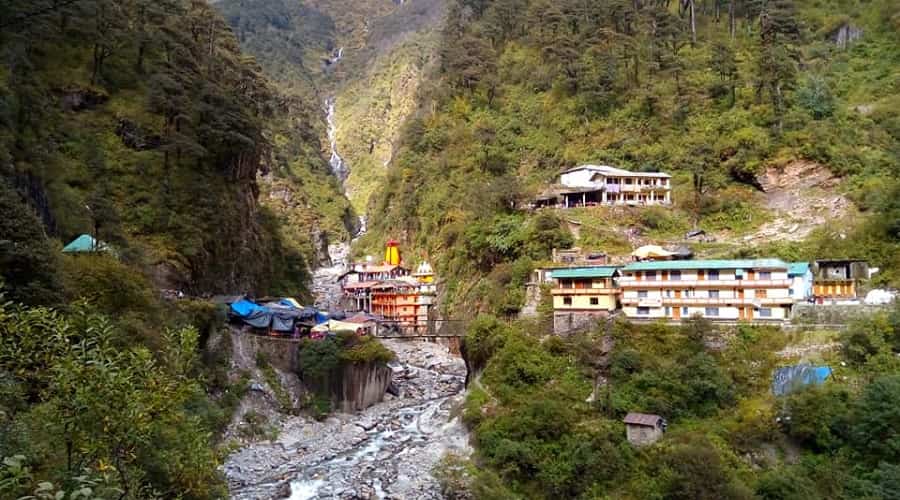
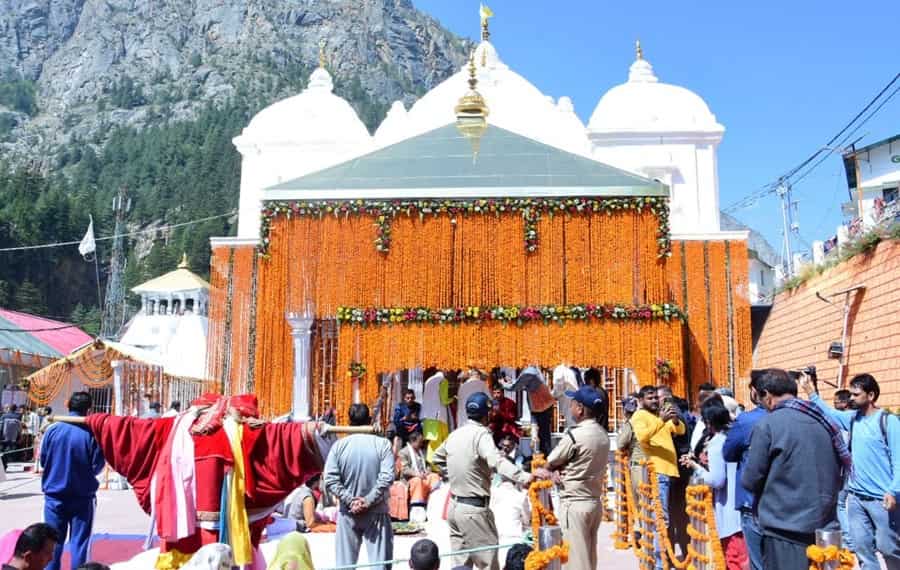
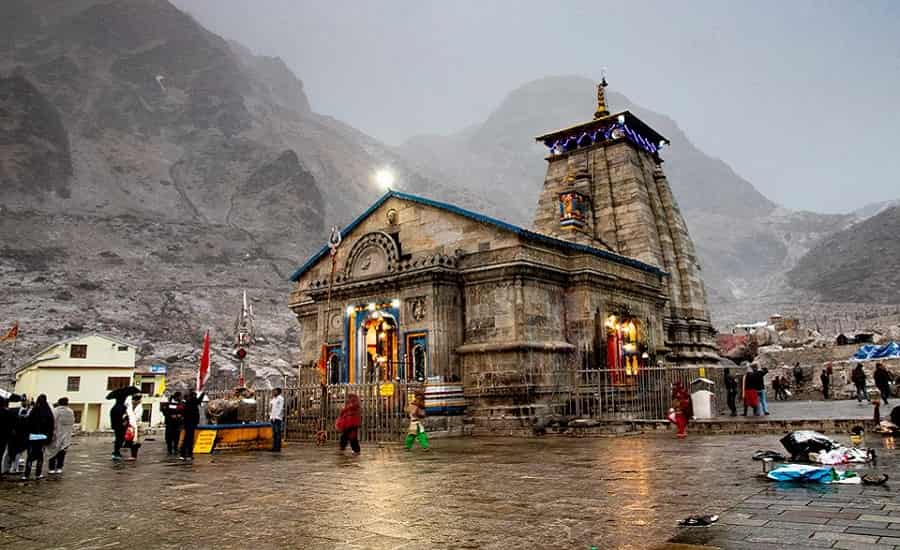
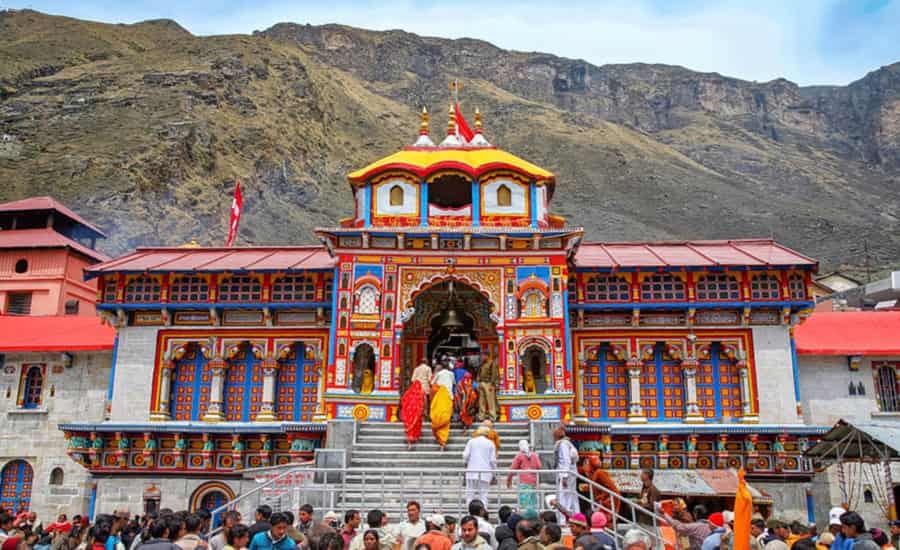

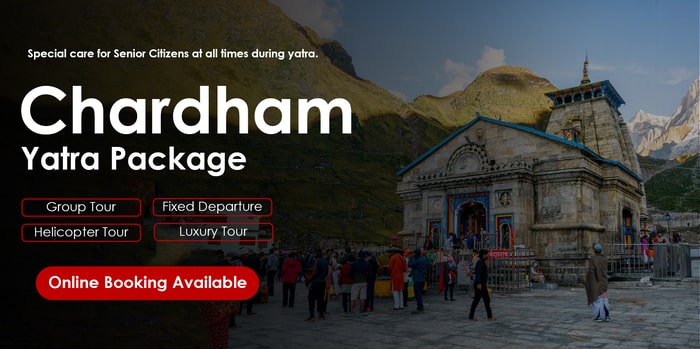

 Call
Call WhatsApp
WhatsApp Enquiry
Enquiry